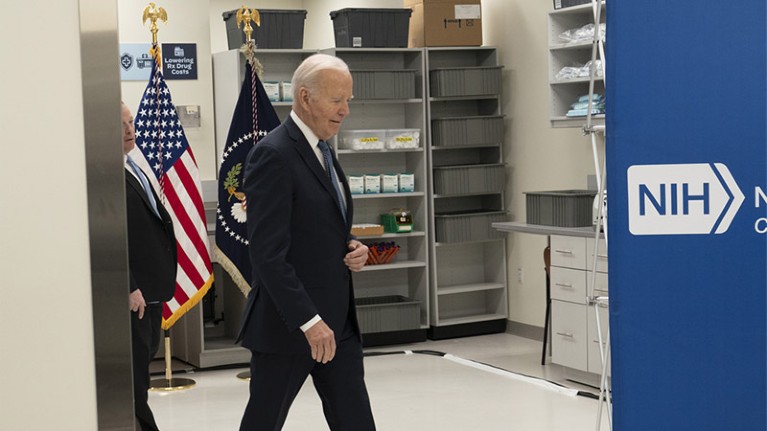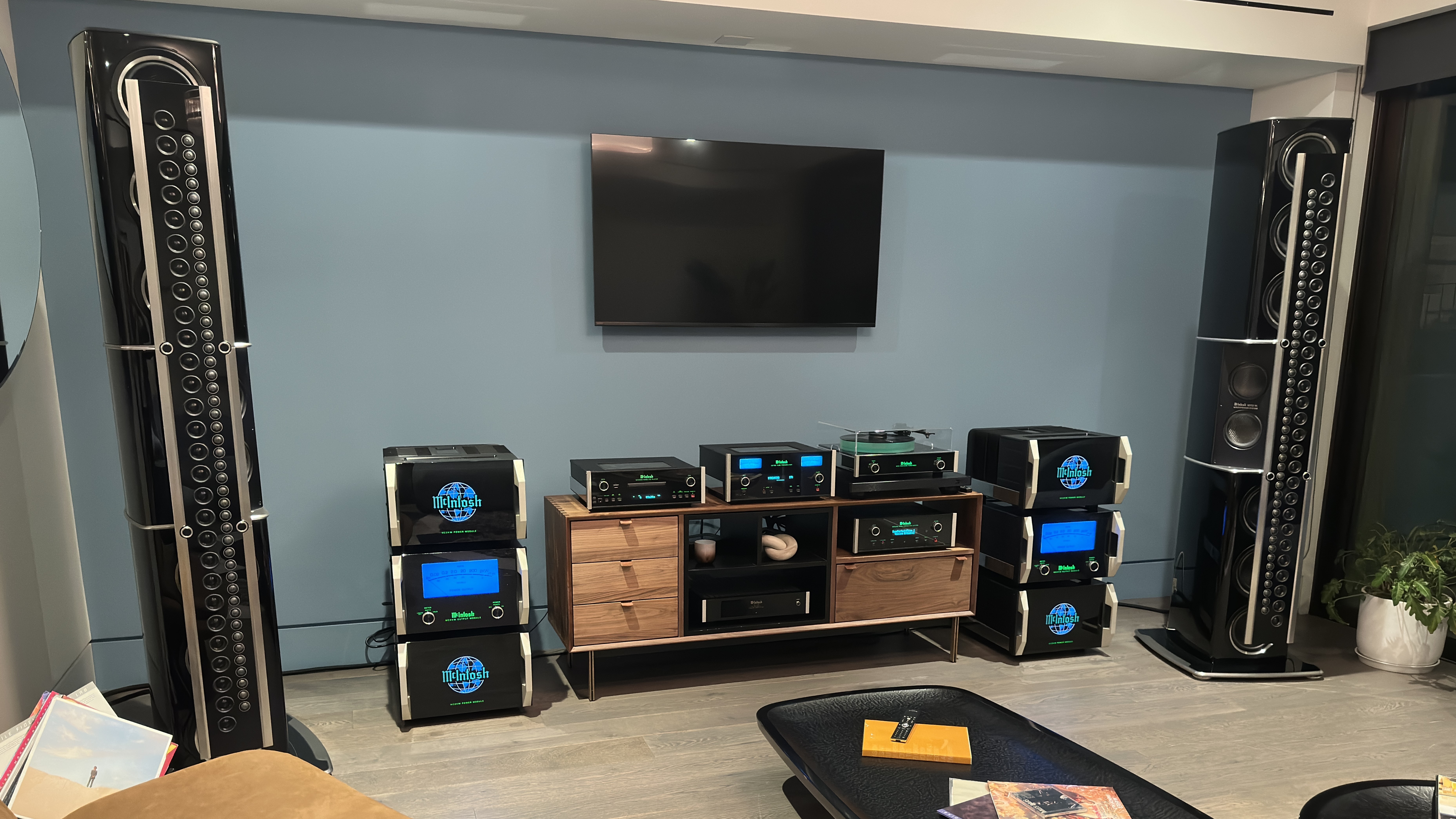[ad_1]
Now that the third generation of Apple’s in-house silicon, the M3 chip, has come to the MacBook Air, the company’s laptop lineup looks a little different. The M1-powered machines have been phased out and the M2 chip is only available in the 13-inch MacBook Air. After testing out configurations of every model Apple offers, our recommendation for most people is the MacBook Air with the M3 chip. But we still think the M2-powered Air is an impressive machine with plenty of life left (plus it has a new lower price).
Apple does things a little differently than PC makers, so we put together this guide to help you make sense of the various chips, screen-sizes, memory and storage capacities, as well as which models we think will work best for different users. Here are the best MacBooks to buy right now..
Factors to consider when buying a MacBook
Compared to PCs, Apple computers tend to have more streamlined specifications. The company has long been known for this simplicity, and the M-series “system-on-a-chip” condenses things even further. The M1, M2 and M3 chips combine, among other technologies, the CPU, graphics card and unified memory (RAM). Apple’s Neural Engine is included too, which is a specialized group of processor cores that handles machine learning tasks such as image analysis and voice recognition. While a unified chip means you have fewer decisions to make when picking a MacBook, there are still a few factors to consider, including the number of CPU cores, amount of RAM, storage capacity, screen size, and, obviously, price.
CPU cores
Currently the lowest-specced chip in a MacBook is the M2 in the 13-inch MacBook Air. It comes with an 8-core CPU and either an 8- or 10-core GPU. At the other end of the spectrum, the M3 Max chip is built with up to a 16-core CPU and a 40-core GPU. Cores are, in essence, smaller processing units that can handle different tasks simultaneously. Having more of them translates to the computer being able to run multiple programs and applications at once, while also smoothly processing demanding tasks like video editing and high-level gaming. In short, more cores allow for more advanced computing and better performance. But if your needs fall below professional-level gaming and cinematic video and audio editing, getting the highest number of cores is likely overkill — and after all, more cores equals higher cost and more power usage.
RAM
Your options for RAM, or in Apple’s terminology, Unified memory, varies depending on the chip you choose. The M2 and M3 chips can be paired with 8, 16 or 24GB of RAM. The M3 Pro chip has 18 or 36GB memory options, while the most powerful M3 Max chip supports 48, 64 or a whopping 128GB of RAM.
You’ve likely heard the analogy comparing memory to the amount of workspace available on a literal desktop surface, whereas storage is the amount of drawers you have to store projects to work on later. The larger the worktop surface, the more projects you can work on at once. The bigger the drawers, the more you can save for later.
More RAM is ideal for people who plan to work in multiple programs at once. And the more demanding each program is, the more RAM will be required. Extra memory can also come in handy if you’re the type who likes to have infinite numbers of tabs open on your browser. If your daily workflow doesn’t involve simultaneously using a vast number of memory-intensive programs, you can save yourself money and buy the RAM configuration that you’re most likely to actually use.
For casual users, 8GB may be enough, however, if you can afford an upgrade to 16GB of RAM, we recommend going doing so, as modern browsers tend to be pretty memory-hungry. Investing in more RAM now will give your new MacBook a longer lifespan of reliable use. It’s also important to keep in mind that, unlike most PCs, the RAM in current-model MacBooks is not user-upgradable, so you’ll want to get what you plan on needing at the outset.
Storage capacity (SSD)
Storage options range from 256GB of SSD for the M2 MacBook Air and 8TB of storage for the MacBook Pros with the M3 Max chip. If you want to rotate between a long roster of game titles or keep lots of high-res videos on hand, you’ll want more storage. If you’re mostly working with browser- and cloud-based applications, you can get away with a smaller-capacity configuration. That said, we recommend springing for 512GB of storage or more, if it’s within your budget. You’ll quickly feel the limits of a 256GB machine as it ages since the operating system alone takes up a good portion of that space. Having 1TB will feel even roomier and allow for more data storage over the life of your laptop.
When Apple announced the iPhone 15, the company also announced new iCloud+ storage storage plans, with subscriptions that allow up to 12TB of storage. You could also transfer files to an external storage device. But if you don’t want to pay for a monthly subscription and prefer the convenience of having immediate access to your files, it’s best to get the highest amount of storage space your budget allows for at the outset.
Screen size
MacBooks come in 13-, 14-, 15- and 16-inch sizes. That might not seem like a huge difference, but, as Engadget’s Nathan Ingraham noted when he reviewed the now-retired 15-inch M2-powered MacBook Air, “a bigger screen makes a surprising difference.” That’s especially true if you plan to use your laptop as an all-day productivity machine and won’t be using an external monitor. More space means you can more clearly view side-by-side windows and have a more immersive experience when watching shows or gaming.
But screen size is the main factor influencing weight. The 13-inch MacBook Air M2 weighs 2.7 pounds, whereas the top-end 16-inch MacBook Pro weighs 4.8 pounds. If you plan to travel a lot or swap your work locations regularly, a smaller screen will make life easier in the long run.
All MacBooks feature IPS LCD panels (in-plane switching, liquid crystal display), which Apple markets as Retina displays. The MacBook Air M1 has a Retina display. A Liquid Retina display comes with the M2 MacBook Air and the Liquid Retina XDR display comes with the 14- and 16-inch MacBook Pros. “Liquid” refers to the way the lighted portion of the display “flows” within the contours of the screen, filling the rounded corners and curving around the camera notch. “XDR” is what Apple calls HDR (high dynamic range).
Compared to most other laptops, MacBook displays are notably bright, sharp and lush. But one feature worth pointing out is another Apple marketing term: ProMotion. It’s the company’s term to describe a screen with a higher, 120Hz refresh rate, which results in smoother scrolling and more fluid-looking graphics. Only the 14- and 16-inch MacBook Pros offer ProMotion; the other models max out at 60Hz, which is perfectly fine for everyday browsing and typical workdays. But if you want buttery-smooth motion from your display, you’ll have to shell out more money for an upgraded model.
Price
When the MacBook Air M3 came out, Apple dropped the price of the base-model, 13-inch, M2-powered Air with 8GB of RAM and 256GB of storage. At $999, it’s now the least expensive new MacBook you can get. Alternatively, you can spend up to $7,199 for the 16-inch MacBook Pro M3 Max with 128GB of RAM and 8TB of storage. Chip type, screen size, memory and storage capacity all influence the final price, which is why guides like this can help you determine just what you need (and what you don’t) so you can get the most cost-effective machine for you.
We recommend the MacBook Air M3 for most people, the MacBook Air M2 for students and those on a budget, and the 14- or 16-inch MacBook Pros for professionals. If you have extra money to spare once you’ve picked your machine, we recommend upgrading to at least 16GB of RAM and 512GB of storage to make your machine as future-proof as possible.
Photo by Devindra Hardawar / Engadget
Screen size: 13” | Processor: M3 chip, 8-core CPU, 8-core GPU, 16-core Neural Engine | Storage capacity (SSD): 256GB | Memory: 8GB | Battery life: Up to 18 hours | Ports: MagSafe 3 charging, 3.5 mm jack, 2 x Thunderbolt/USB 4 | Connectivity: Wi-Fi 6E, Bluetooth 5.3
Read our full review of the MacBook Air M3
Our previous pick for the best overall MacBook was the MacBook Air with the M2 chip. The new M3-enabled MacBook Air isn’t a huge change from its predecessor — and that’s a good thing. Our laptop expert Devindra Hardawar reviewed the new model and confirmed that the latest MacBook Air builds on everything the M2 model got right: it has a great screen and full sound in a thin and lightweight aluminum unibody that feels premium. With the addition of the M3 chip, the performance is now more impressive, achieving even higher scores in our benchmark testing. There’s also support for Wi-Fi 6E in the new model, plus the Air can now handle two external displays instead of one, but only with the laptop lid closed.
The latest Air maintains the overall design of the previous model, with a uniformly thin profile (the wedge shape is officially gone from Apple’s lineup now that the M1 MacBook Air has been discontinued). Apple claims an 18-hour battery life with video playing and 15 hours of web browsing, and we can confirm that you’ll get significantly more than a single workday out of a charge. In Devindra’s tests, the machine dropped to 40 percent after ten straight hours playing fullscreen 4K video at full brightness.
Apple released both the M3-powered 13-inch and 15-inch MacBook Air simultaneously. We think the 13-inch model has the best combination of portability and performance. It weighs just 2.7 pounds and easily slips into a bag to take on the road. However, the 15-inch model may be worth it for those who constantly have dozens of windows open at once or dabble in media editing — though editing pros should probably opt for a MacBook Pro with the M3 Pro chip. The 15-inch model is also ideal for anyone dealing with visual impairment and would like an easier-to-read screen.
As for the screen itself, the 13-inch model has a Liquid Retina display with 2,560 x 1,664 resolution at 224 pixels per inch. That’s exactly the same as the M2 Air — but again, Apple didn’t mess with a good thing, sticking with a great-looking display that’s bright enough to use outside in sunlight. It still doesn’t have ProMotion, which means the refresh rate is limited to 60Hz. If you need that silky-smooth scrolling, you’ll have to bump up to a MacBook Pro.
To get the most out of the new chip, we recommend upgrading to 16GB of RAM. That will enable not just a full day of productivity, it’ll also let you play more serious games. Devindra was able to play both Lies of P in 1080p+ and the director’s cut of Death Stranding with smooth graphics at good resolutions — though he did note that you can’t crank up the graphics settings too high. The speakers are best-in-class and the webcam is great for video conferencing — particularly with Apple’s background blurring and brightness adjustments. Finally, the responsive keyboard and smooth trackpad are the ideal interface for what adds up to be a great computer.
- Lightweight yet sturdy design
- Fast performance from the M3 chip
- Excellent speakers, keyboard and trackpac
- Bright and clear screen
- No USB-C on the right side
- Limited to 60Hz refresh rate
$1,099 at Amazon
Photo by Devindra Hardawar / Engadget
Processor: M2 chip, 8-core CPU, 8-core GPU, 16-core Neural Engine | Storage capacity (SSD): 256GB | Memory: 8GB | Battery life: Up to 18 hours | Ports: MagSafe 3 charging, 3.5 mm jack, 2 x Thunderbolt/USB 4 | Connectivity: Wi-Fi 6, Bluetooth 5.3
Read our full review of the MacBook Air M2
Before the release of the M3-enabled MacBook Air, the MacBook Air M2 was our pick for the best Apple laptop you can buy. Now it’s an extremely capable budget pick starting at $999 — the same list price as the now-retired M1 MacBook Air. In his review, Devindra called the M2 Air a “near-perfect Mac,” awarding it a high score of 96. This model received a complete refresh in 2022, and since the M3 is largely the same as the M2 from a design perspective, Engadget’s Dan Cooper says that the best thing about the new M3 Air may be the price drop it ushered in for the M2 model.
The M2’s gorgeous 13.6-inch Liquid Retina screen can hit up to 500 nits of brightness, making it easy to use outside. The 60Hz refresh rate doesn’t deliver the butter-smooth scrolling you get on Pro models, but it’s still lovely. The quad speaker array pumps out great sound, filling a room at max volume without distortion, and the three-mic array does a good job of picking up your voice for video calls. The 1080p webcam is an improvement over previous generations, and it even beats our top Windows laptop, Dell’s XPS 13 Plus, which still sports a 720p camera.
The M2 Air hangs on to its 3.5mm headphone jack and includes two USB-C Thunderbolt ports, for accessories like an external display, plus a MagSafe connector. The battery life is ample, lasting 16 hours and 30 minutes in our rundown test, which should be more than sufficient for a day (or two) of work.
The M2 processor finally gave the Air enough speed to play games, particularly those from Apple Arcade. Streaming and cloud gaming work well through Safari, and you’ll find a handful of compatible titles on Steam. However, if gaming is your main goal, you may want to upgrade to an M3 model, or go outside Apple’s offerings all together as not every AAA release is natively compatible with macOS. Our review unit performed well in benchmark tests, beating the Air M1 and nearly matching the performance of the 13-inch MacBook Pro M2. It’s a fanless system which means it’s quiet, but to keep things cool, the CPU does have to be throttled occasionally.
Overall, it’s an excellent choice for everyday use and can handle most tasks. Of course, if you’re planning on doing intensive video editing, you’ll likely want something more powerful, such as the MacBook Pro M3, but the Air is an affordable, multipurpose, ultraportable laptop.
For $999 you get the M2 chip with an 8-Core GPU, 8GB of RAM and 256GB of storage. We did notice better performance when the RAM was upped to 16GB, but if you’re trying to keep things under $1,000, the base model is still plenty capable for everyday productivity. You can also look into a refurbished model, which you can buy directly from Apple with a year-long warranty.
The 15-inch MacBook Air M2 is no longer officially part of Apple’s lineup, but many retailers still have some backstock of the larger model, and again, taking advantage of refurbished offers is a good way to go in this case. In his review, Engadget’s Nate Ingraham said the extra couple inches on the 15-inch screen made a surprising difference.
- Bright and colorful screen
- Clear and full sound
- Thin and light design
- Speedy performance for everyday use
- Refresh rate only 60Hz
- Webcam image is drab
$980 at Amazon
Photo by Devindra Hardawar / Engadget
Processor: M3 chip, 8-core CPU, 10-core GPU | Storage capacity (SSD): 512GB | Memory: 16GB | Battery life: Up to 22 hours | Ports: MagSafe 3 charging, 3.5 mm jack, 2 x Thunderbolt/USB 4, HDMI, SDXC slot | Connectivity: Wi-Fi 6E, Bluetooth 5.3
Read our full review of the Apple MacBook Pro M3
During a late-night, pre-Halloween event, Apple revealed its new M3 chip along with the new MacBook Pros that would house it. They also officially discontinued the 13-inch touch bar MacBook Pro. There’s a new base model Pro with 8GB of memory, 512GB of storage and the standard M3 chip (the M2 generation was only available with the M2 Pro or M2 Max chips). It sells for $1,599, making it the most affordable 14-inch Pro model yet.
Unfortunately we don’t recommend you grab that one. You’ll at least want to spring for a model with 16GB of RAM to get the most out of your new M3 machine. Beyond that, it’s hard to go wrong with these new MacBooks. As Devindra points out in his review, these new chips are “incredibly efficient and powerful” and the laptops themselves are as “elegant as ever.”
For multimedia professionals, we recommend bumping up to the M3 Pro chip with an 11-core CPU and 14-core GPU. You can grab one with a 14-inch screen, 18GB of memory and 512GB of SSD for $1,999. If you’ve got demanding video and/or audio projects with big timelines, you may want to jump up to the 16-inch M3 Max MacBook Pro with a 14-core CPU and 30-core GPU. That configuration will run you $3,499 paired up with 36GB of RAM and 1TB of storage. For something in between those two picks, you could go for the 14-inch M3 Pro with a 12-core CPU and 18-core GPU paired with 18GB of RAM and 1TB of storage. It combines the speed of the M3 Pro chip, without the higher price of the Max chip, running you a more palatable $2,399.
Apart from the chips, the hardware on the M3 MacBook Pros remains largely the same. You still get a bright and vibrant MiniLED Liquid Retina XDR display with a 120Hz refresh rate for smooth scrolling and animations.
The crisp, punchy sound from the six-speaker array is better than what most laptops can deliver and the built-in mics are great for video calls. It has the same array of ports as the M2 Pros, including an SD card slot, headphone jack, HDMI port and three Thunderbolt 4 sockets plus the MagSafe charging port.
As for battery life, our rundown tests outperformed Apple’s listed estimates by a couple hours, getting 24 and a half hours on the 14-inch model and 20 more minutes than that with the 16-inch Pro. In real-world use, it took two days before needing to hook the laptops back up to the grid.
- Good selection of ports
- Nearly 24-hour battery life
- Crisp and bright display
- Powerfully fast M3 chips
- Expensive
- 8GB of RAM on base model isn’t enough
$1,715 at Amazon
[ad_2]
Source Article Link

























